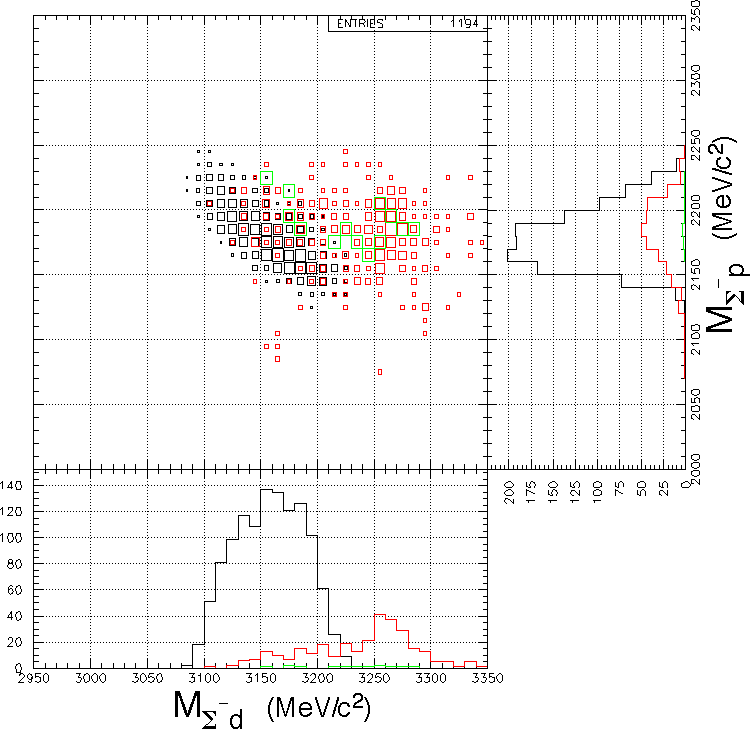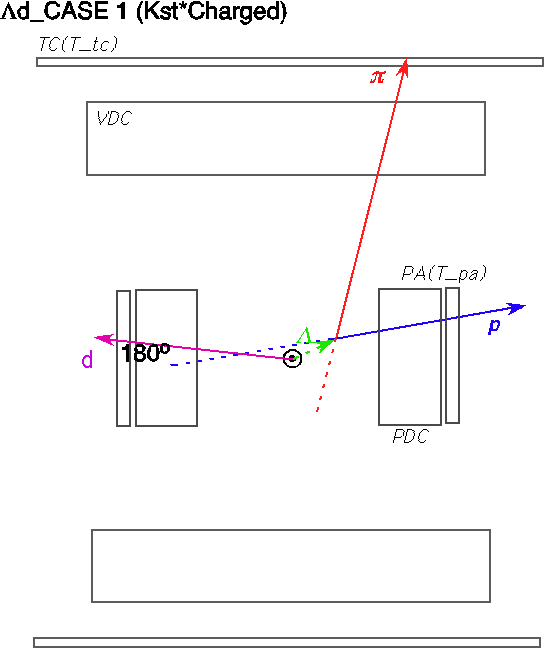

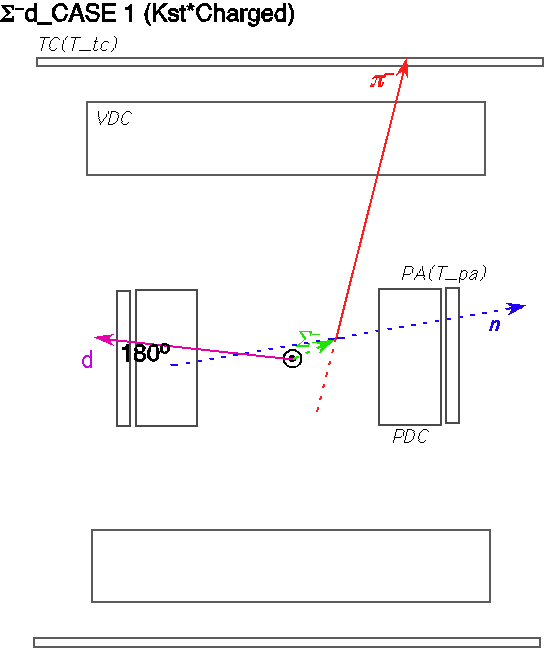
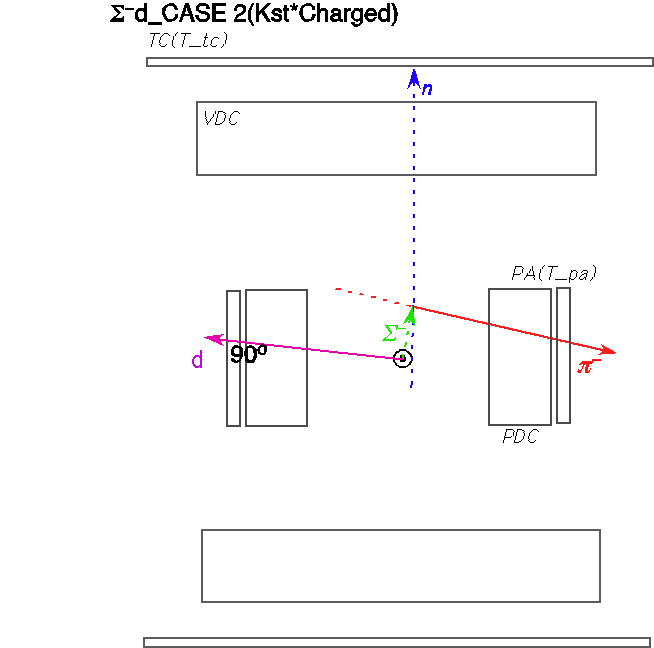
By using &Lambda d/&Sigma- d pairs detected simultaneously, we can study the final state
K- + 4He -> &Lambda + n + d/&Sigma- + p + d.
Even if we detect &Lambda/&Sigma- and d simultaneously, the final state can be contaminated byK- + 4He -> &Lambda + p + &pi- + d/&Sigma- + p + &pi0 + d,
K- + 4He -> &Lambda + n + &pi0 + d/&Sigma- + n + &pi+ + d,
orK- + 4He -> &Sigma0(&Lambda&gamma) + n + d,
K- + 4He -> &Sigma0(&Lambda&gamma) + p + &pi- + d,
K- + 4He -> &Sigma0(&Lambda&gamma) + n + &pi0 + d.
The pionic final states are very difficult to be detected due to the small reaction Q-values. All of the contaminants can be eliminated by imposing 4He(stopped K-, d&Lambda)X0/4He(stopped K-, d&Sigma-)X+ missing mass being neutron/proton mass, in principle.This final state is considered to include known 2 subcomponents, as
K- + "pn" -> &Lambda + n + (d)/&Sigma- + p + (d)----(I):two-nucleon absorption &Lambda n (d)/&Sigma- p (d) branch,
K- + "pn" -> &Lambda + (n) + d/&Sigma- + (p) + d----(II):three-nucleon absorption &Lambda (n) d/&Sigma- (p) d branch,
where spectators in the reactions are in round-brackets, and possible two-more subcomponents,K- + 4He -> S+(T=0) + n/S0(T=1) + p, S+(T=0)->&Lambda + d/S0(T=1)->&Sigma- + d----(III):S+(T=0)/S0(T=1) tribaryon production and its &Lambda d/&Sigma- d decay,
K- + 4He -> X0(T=1/2) + d, X0(T=1/2)->&Lambda + n/&Sigma- + p----(IV):X0(T=1/2) dibaryon production and its &Lambda n/&Sigma- p decay,
are expected. Here, all FSI (elastic re-scattering, &Sigma&Lambda conversion) were not listed. Very unfortunately, all these processes cannot discriminated by purely kinematical consideration, and we do need some dynamics. For example, the relationship between dY invariant mass,MdY, and dY total 3-momentum, vec(ptotal)=vec(pd)+vec(pY), is as below:(MYd)2 = (pY+pd)2 = (EY+Ed)2 - (vec(pY)+vec(pd))2=(Einit-EN)2 - |vec(ptotal)|2
=(Einit-sqrt(mN2+|vec(pN)|2))2 - |vec(ptotal)|2=(Einit-sqrt(mN2+|vec(ptotal)|2))2 - |vec(ptotal)|2
where the conservation of 4-momentum,Einit=M4He+MK-=EY+EN+Ed,
vec(pinit)=vec(0)=vec(pY)+vec(pN)+vec(pd),
have been assumed.Note that it is already known from YN correlation analysis that the process (I) does not produce a deuteron over 300 MeV/c, and it makes a broad peak at 3070 MeV/c^2 if the deuteron could be detected.




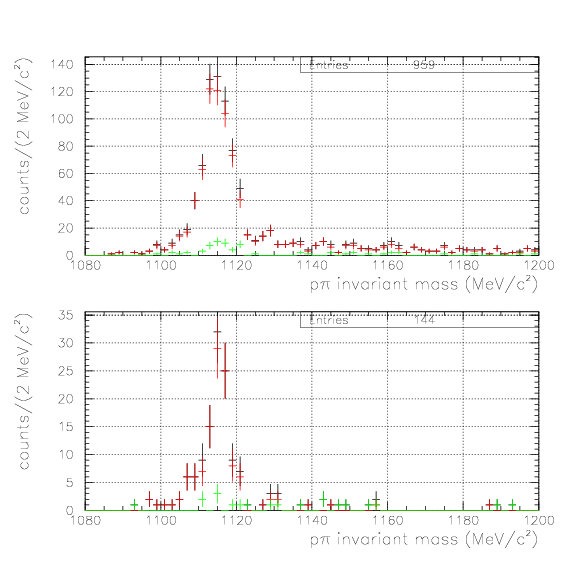
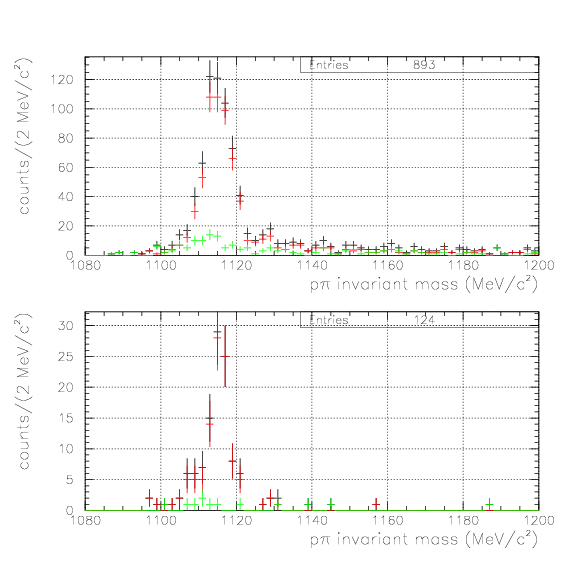
To identify the &Lambda particle, we impose positive shift and p&pi invariant mass within (1108.,1124.)/(1111.,1121.) for case1/2, respectively.

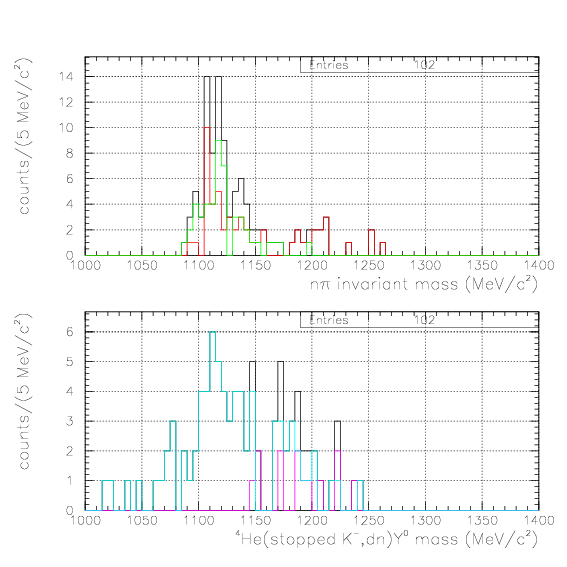
K- + 4He -> &Lambda + n + d
, andK- + 4He -> &Sigma- + p + d
. The Y0/Y- mass spectra are shown below.
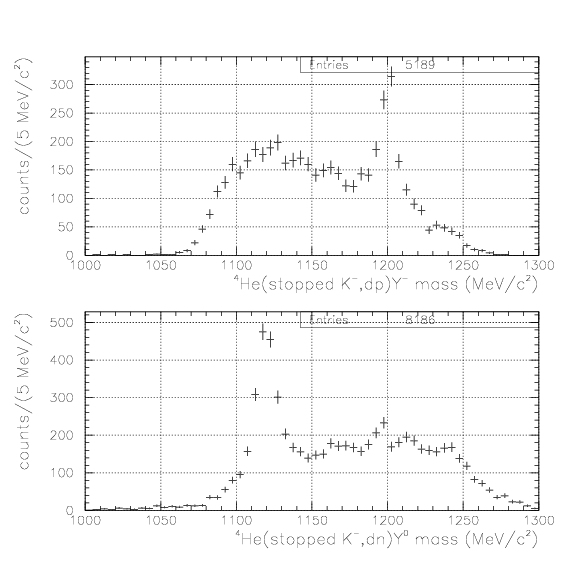
K- + 4He -> &Lambda + n + d->(p+&pi-) + n + d/(n+&pi0) + n + d
, andK- + 4He -> &Sigma- + p + d -> (n + &pi-) + p + d
. Then, it is possible to introduce hyperon 3-momentum pY(1:3) and Mmiss being defined byvec(pY)=-(vec(pd)+vec(pN)),
Mmiss=sqrt((M4He+MK--EN)2-PN2)
, and treat them as hyperon 3-momentum and Yd invariant mass. The &Lambda/&Sigma- are defined adequately after investigation of S/N ratio.

